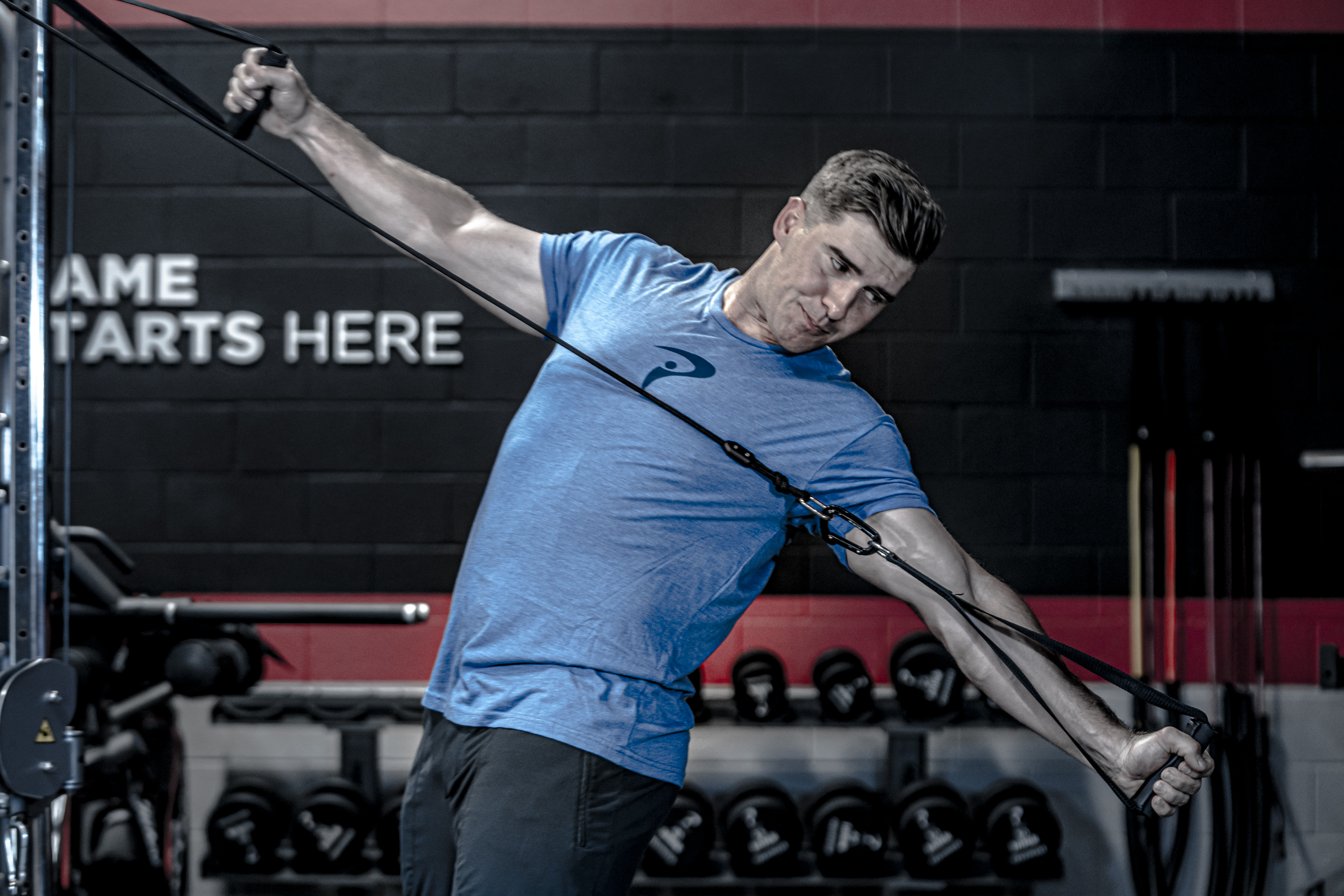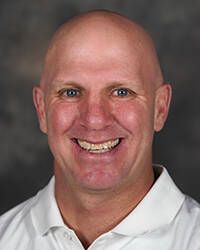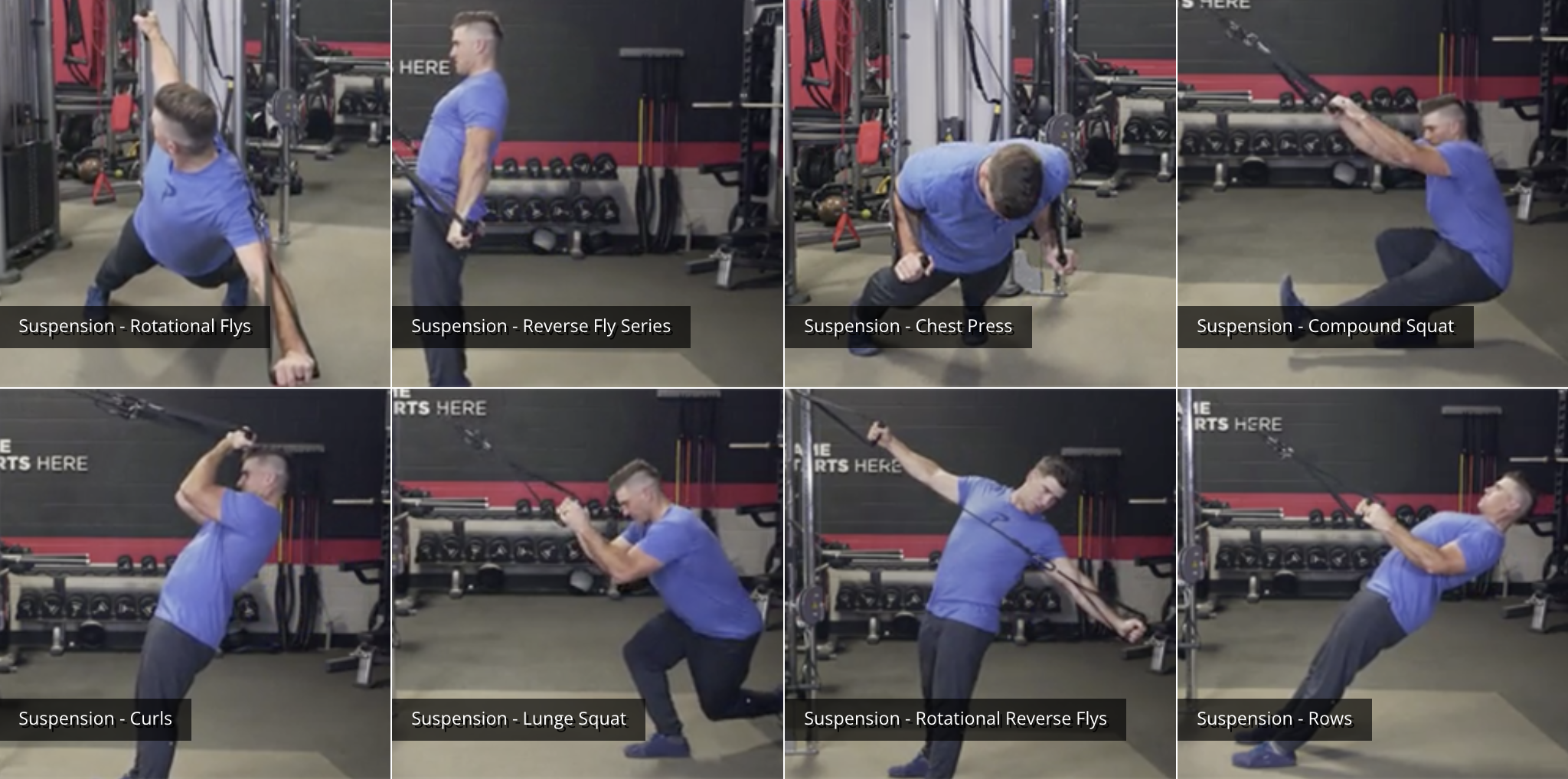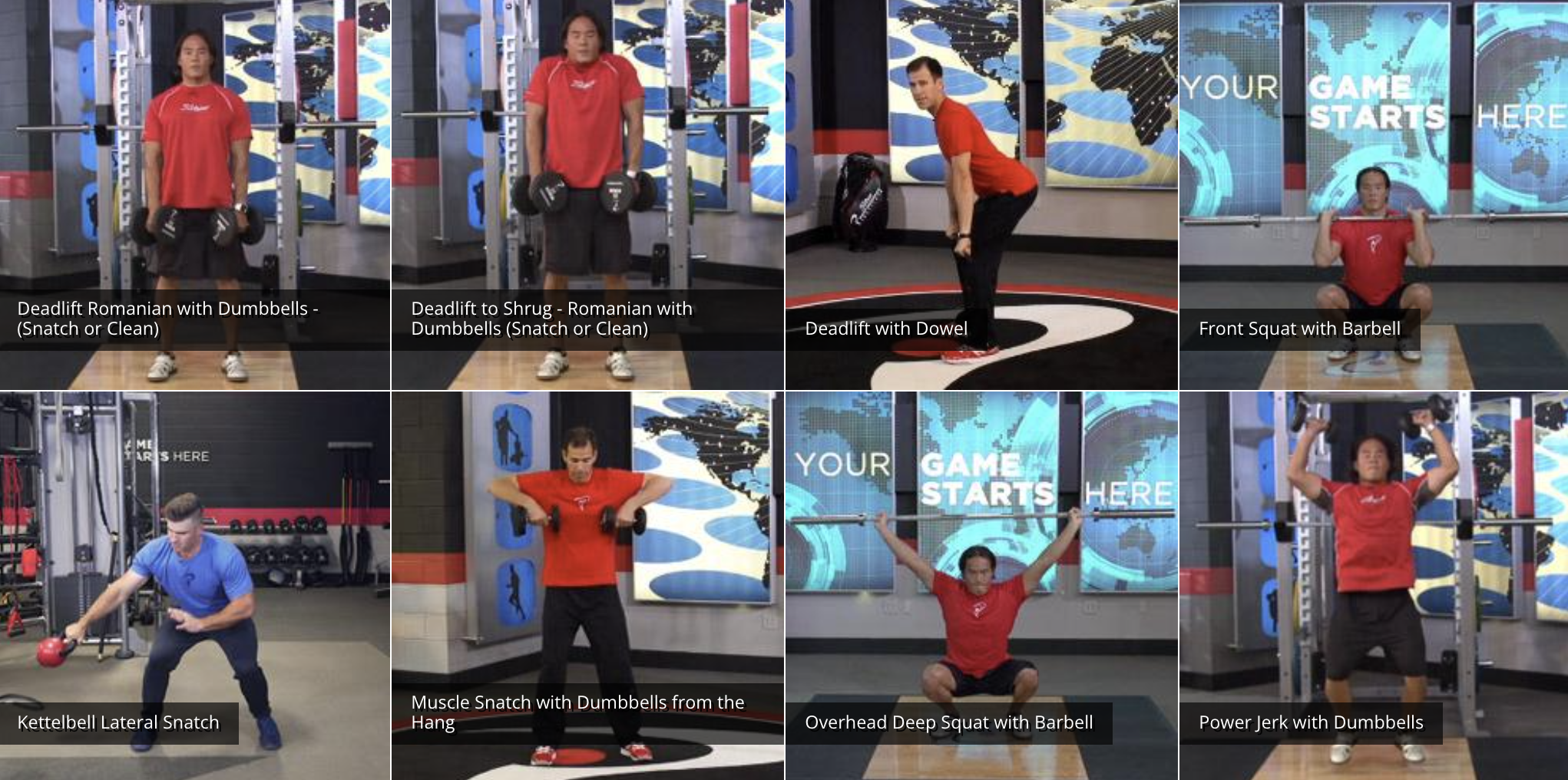IMPROVE MY GAME
Articles
Using Principles from TPI Power Level 2 Outside of Golf

Training philosophy has always been a hot topic in sports performance. With a wide range of expertise and bias in the industry, it's clear that there are many approaches that can benefit an athlete. Golf, a sport where weightlifting and other forms of heavy resistance training were once considered the worst thing a player could do, has taken center stage in highlighting their training and preparation. TPI has given golf fitness a voice and a platform to show not only the importance golfers are placing in physical preparation, but the value that they’re putting into their training.
After spending 17 years as a Strength and Conditioning Coach in collegiate and professional sports, I was curious about how well the TPI concepts would crossover to other sports. After completing the Power Level 2 Certification, I started implementing some of the tools taught in the course with my current Women’s Basketball team. From power to injury mitigation to return to play for injured athletes, the results have been greater than I could have imagined. Different assessments (mixed in with the FMS assessment), TRX “Grind” Training as well as different Med Ball and jumping variations, I have found a crossover that I believe is beneficial for coaches training any sport that involves power (which is every sport) or to be more specific, rotational power (which is also evident in every sport).
WE'RE HOSTING OUR FIRST EVER POWER LEVEL 3 AT TPI ON JUNE 11- 13
I started implementing some of these exercises into my in-season training for players that weren’t getting a lot of minutes and still had a power focus in their plan. A lot of the power movements (MB Slams, both bilateral and unilateral, power step-ups and Olympic Lift and Olympic Lift variations) are year-round staples in my program, so it wasn’t like I was introducing an entirely new stimulus to the athletes. Instead, I got creative with the programming, manipulating volume and intensity when using these exercises.
TRX (Suspension) Training
Suspension training is something that I utilize on a year-round basis with my athletes. There are so many things you can do with a suspension trainer, and, when programmed and coached correctly, I believe one of the best tools in our toolbox. Being able to manipulate load just by something as simple as changing the position of your body is a huge benefit for an athlete. It really gives the athlete a feel for what they can and can’t do. It’s nice when you see athletes realize this and it “clicks” with them as to why we’re using this exercise and what part of the body it’s working. When an athlete can actually feel the exercise, and not just say it’s my “arms” or “legs”, you know the athlete then has a better understanding of the “why”. That is one reason why I think suspension training is so valuable, because it can really teach the athlete to feel the movement. There is also a huge return on your investment with suspension training. Done correctly, strength gains can come just as fast as with other forms of resistance training, yet the toll they take on your body is much less.
“Grind” Training
What I find so effective about grind training is how easy it is to teach the athlete how to control their body. It forces an athlete to really focus on not just the movement, but how to control how they are performing the movement. It also emphasizes a focus of all three parts of the Triphasic Training concept (concentric, isometric and eccentric) and really gives the athlete a chance to feel their body and understand the purpose of the movement.
Grind training can be done with almost any TRX exercise. I never do more than 3 reps in each set, due to the amount of time an athlete is under tension. Push-Ups, Rows and Single Leg Squats are the movement I really focus on when I program grind training into my plan.
Med Ball Training
Med balls are one of the best tools for safe, efficient power training. They are mobile, easy to implement and can be safely used in a year-round program. The Med Ball Slam or variations of Med Ball Slams are a great way to teach an athlete how to produce force in a safe and effective manner. From there, you can progress, to Single Leg MB Slams and Rotational Wall Slams.
However, before I implement a Rotational power movement of any kind, I make sure to have properly trained the stabilizing muscles in the spine. I will cover this more in the next section, but basically my goal is to teach the athlete what it feels like in training to properly rotate from the torso and not the spine. Golfers have a very good feel for this, and in my experience, can pick up on this faster than other athletes, but it’s important for the athlete to understand the feeling of proper rotation so they can avoid injury during training.
Med Ball Slams
The Med Ball Slam is one of the best “bang for your buck” exercises. It’s a great way to incorporate both upper and lower body power. It’s easy to teach and the transfer of power to any sport is very high. The other thing I love about the Med Ball Slam are the number of variations you can utilize as well as it’s efficacy during any portion of the training cycle. This is an exercise I’ve used with athletes on Game Day’s to help with nervous system activation. In terms of reps, I never have an athlete perform more than 5 reps. I keep the same rep scheme I do for any power based exercise because it’s really important that the athlete be able to produce max force with every rep they perform.
Med Ball Squat Jumps
Once I’ve taught proper jumping and landing mechanics, Med Ball Squat Jumps are a great way to add resistance to a jumping motion. With heavy jumping sports, I tend to utilize this exercise more in off-season training, however, early on in in-season or pre-season training cycles, I will include it in the program.
When programming any sort of power movement, especially at the beginning of a training cycle, I will always put these in first so the athlete is fresh. However, as the athlete becomes more highly skilled in training, I will vary where I place these exercises, especially when I’m doing any form of contrast training. I will sometimes place an MB Slam or bodyweight power movement at the end of each session if I know the athlete can still produce max effort. However, I only do this at a time when I know the athlete is in the physical condition to handle the load and is skilled enough to be able to do the movements at max effort while being a little fatigued. In sports, athletes are asked to perform at max effort fatigued all the time (a golfer hitting driver on the 72 hole of a Major), so this is my way of manipulating intensity in a safe and efficient manner.
Core “Stability” Training
One of the most talked about things in performance training is “core” training. When is enough, enough?” What are good exercises to do for the core? Should core training be done every single day? I don’t have the answer to those questions, but once an assessment is completed, at that point it becomes clear where the athlete may have some imbalances and weaknesses and what the best course of action is when it comes to core training. The assessment that I like to use the most comes from the Functional Movement Screen, the rotary stability screen. Basically, it’s another form of the “Bird Dog”, except you don’t use opposite arm and leg at the same time, you have the athlete perform the Bird Dog with the same arm and the same leg. If the athlete is unable to perform the motion without losing balance, you can see a stability issue. This assessment, combined with the seated trunk rotation, gives me a great sense of where the athlete is at from a core stability function and how much and what exercises I will choose when it comes to core training.
Pallof Press Holds
In terms of anti-rotation movements, I’ve found the Pallof Press to be one of the most effective movements. A variation I use throughout the year is a basic hold. I vary the time of the hold based on the time of year and the resistance varies based on the strength of the athlete as well, but typically I have the athlete hold between :10 and :20. I have used both bands and Keiser Functional Trainers for the movement, so whatever is available can be used. If no equipment is available, you can have the athlete pretend they are holding a band and push against their hands, creating the same feeling a band or functional trainer would create.
Stability Ball Plank Rollouts
Core training done correctly with stability balls can be some of the best core training tools in the tool-box. The plank rollout is an anti-extension exercise that will benefit just about any athlete. While we talk a lot about anti-rotation exercises, anti-extension is just as important for spine health and stability for all sports that have a rotational component. The plank rollout allows the athlete to learn how to maintain a stable spine while extending their upper body. There are more difficult variations of this exercise, however, the rollout is one of the safest and most effective of the variations. It can be performed year-round and mixed into the lift seamlessly at almost any point.
Olympic Lifting
I’m not going to get to in depth on the topic of Olympic lifting, but I am a believer that there is a time and place for it and is very athlete dependent. At times, the risk can be greater than the reward and it takes time to properly teach technique. Early on in my career, Olympic Lifts were King and I taught them regardless of the athlete’s ability and sport because I thought they were so valuable. In retrospect, I was very narrow-minded in that approach.
More recently, I’ve adopted the philosophy that it needs to be athlete-dependent and situation-dependent. If I’m training a professional athlete years into their career with a lot of miles on their body, I’m going to be more conservative in my approach to them. In terms of the collegiate setting, I definitely see a place for them, however I have found so many other ways in which to train for power, that, many times I leave it up to the athlete on whether I use Olympic Lifts with them. When I say I leave it up to the athlete, I look at many factors, including training age and skill, whether they used them in high school or in a previous program if they were a transfer, and how they feel performing the lifts when I’m teaching them. This last point is my deciding factor for whether I will use an Olympic lift or variation of one. If an athlete isn’t comfortable with the lift, no matter how beneficial it is, I won’t use it. At the end of the day, athletes must trust that what they are doing is going to help them. If they don’t feel like they are getting something out of the lift, it’s up to me as the Performance Coach to find what will work for them. It doesn’t mean you let the athlete dictate what it is they do, but educate them and let them understand what each exercise is doing, the pros and cons and why they should or shouldn’t do a certain exercise.
In terms of Olympic lifts that I utilize, I keep it very simple. I use the Clean Shrug (or Clean Pull) off the floor and out of the hang position (bar at or slightly above knee level) and I use Power or Hang Cleans. As valuable as I think the Barbell Snatch is, I have never programmed it and have had a lot of success building power without it. I have used the One-Arm Dumbbell Snatch and do feel that it can be very beneficial. It’s easy to teach and the relatively safe. The most important thing I always think about is “Do no harm.” If athletes are leaving the weight room feeling like they are hurting or are getting hurt doing certain exercises, it’s time to seriously evaluate both the programming and the coaching behind the programming.
Conclusion
The beauty of training is that there are so many ways to train athletes and each coach has their unique way of delivering a program to an athlete. When I was taking the Power Level II course, I saw a lot of the exercises I have programmed over the past 17 years. What I found interesting was I learned something new about each of those exercises because of the way the coaches were teaching the lifts and explaining the lifts. I was able to take different cues to use with the athletes I train. In the end, there are many ways to get the job done. Don’t be afraid to try new things and experiment with new exercises. Most importantly, don’t be afraid to ask the athletes you’re training how they’re feeling and what’s working for them. Their input is vital to the overall success of the program.

Jeremy Golden was named Strength and Conditioning Coach for the Virginia Women’s Basketball team in July of 2019, a position he held until March 2022. Golden, the former Head Strength and Conditioning Coach for the WNBA’s Los Angeles Sparks, has spent over a decade working with various NCAA Division I athletes before arriving at Virginia. Most recently, Golden worked as the Assistant Director of Athletic Performance at the University of New Mexico, where he worked with Lobos Women Basketball and Softball programs. Before that, Golden worked as the Director of Sports Performance at Santa Clara University. He also spent six years as an Assistant Strength and Conditioning Coach at Cornell, and one year working with the Friars’ Women’s Basketball team at Providence College. Golden has also made collegiate stops at Colgate University (Hamilton, N.Y.), and the University of Texas, El Paso (El Paso, Texas). Additionally, Golden spent time as the Head Strength and Conditioning Coach for the Albuquerque Thunderbirds of the NBA Development League (now the NBA G-League). A Certified Strength and Conditioning Specialist and Registered Strength and Conditioning Coach *D through the National Strength and Conditioning Association, Golden also serves as a board member with the NSCA’s Basketball Special Interest Group. Golden, who is also certified through the Titleist Performance Institute (TPI) has worked with a number of collegiate golfers who have gone on to play professionally. As a junior in college, Golden walked-on and played football at The University of Tulsa while earning a Bachelor of Arts degree in Mass Communication, which he received in 1999. Golden then went on to earn a Master’s of Science degree in Physical Education and Sports Administration from The University of New Mexico in 2003.

